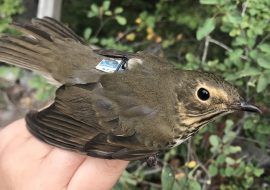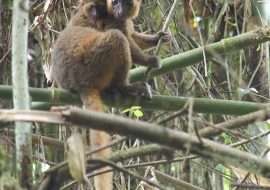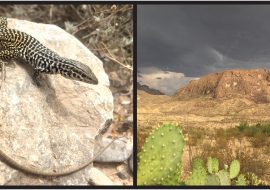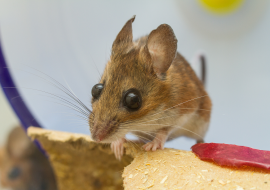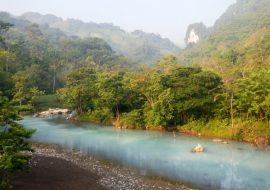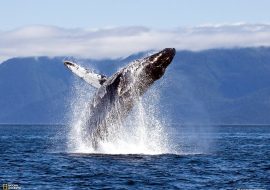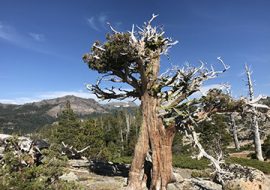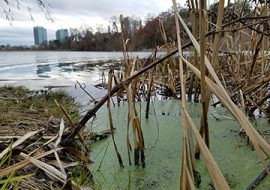Every spring, nature enthusiasts are excited for another bird migration made evident by the countless posts on social media noting rare warblers spotted in backyards and high species counts on birding trips. And the excitement is warranted, as migration is an amazing feat, both ubiquitous and complex, requiring coordination of numerous adaptations for the birds […]
Tag: blogging
Surviving Cyanide – Part One
Eating is dangerous. Are you drinking a glass of wine? Perhaps planning pesto for dinner? The very flavors that attract us to those foods come from toxins plants produce to protect themselves. We humans know to the deadly ones. But imagine you’re a wild herbivore – every bite you take is a risk. Bamboos, and […]
Bioenergetic costs of asexuality – does the mitochondrion play a role in maintaining sex?
Among vertebrate animals, sexual reproduction is ubiquitous. But why? Asexual populations should outcompete their sexual neighbors (Maynard Smith, 1958).
Revealing ancient hybridization’s role in diversification
Hybridization between closely related species is a rapidly emerging field of interest for evolutionary biologists, and the more scientists look for signals of hybridization (with ever fancier tools), the more we learn that hybridization is the norm rather than the exception (Payseur & Rieseberg 2016). While young species pairs tend to hybridize more readily than […]
Reproductive Isolation and the ‘Hockey Assist’ – How a shift to self-compatible mating systems can bring about reproductive isolation
The first steps in the process of speciation are a bit paradoxical when you think about it…how does one freely interbreeding species make the transition to two reproductively isolated, independent species? More specifically, how do intraspecific mating barriers become interspecific? And why even are there intraspecific mating barriers? Well, that last question is easier to […]
The difference 70 miles can make
Adapting to temperature is critical for any organism. Thus, many mammals, especially small, temperature-sensitive ones, have adaptations allowing them to modulate their metabolisms to adapt to their local winter temperatures, at an energetic cost (Chappell, 1980; Garcia-Elfring, Barrett, & Millien, 2019; Geiser & Ruf, 1995). The optimal metabolic modulation could be very precise, and would […]
What does it take to be extreme? Insights from toxic springs in Southern Mexico
Taking a hike through the Villa Luz Natural Park in Southern Mexico, you’ll quickly find yourself enraptured. As you cross the steel bridge that hangs over the river, the lush, bright green foliage of the jungle and sounds of birds and howler monkeys surround you. The deeper you go, the faint sulfurous smell of rotten […]
Jumping genes help resolve obscure species relationships
Figuring out evolutionary relationships between species is hard enough when they diversified recently, but what if they rapidly diversified many millions of years ago? A group of baleen whales, the rorquals (Balaenopteridae), for example, diversified starting about 10.5 million years ago (Figure 1; Árnason et al. 2018). Within this group, the evolutionary relationship of the […]
Three’s not a crowd! Does genetic variation across a tri-species hybrid zone respond to environmental differences across the landscape?
Hybrid zones elucidate the barriers to interspecific reproduction, the raw material for speciation, and thus are unparalleled resources for evolutionary biologists (Harrison 1993). However, when hybrid zones appear to lack reproductive barriers to gene flow, they pose a different set of questions, for example, what are the historical and contemporary factors which facilitate gene flow […]
Oversalted: How does a tiny floating plant cope with urban runoff?
Humans are globally redistributing salt. Soils (Rengasamy 2006) and freshwater (Dugan et al. 2017) are becoming saltier, while the ocean is experiencing fresh and salty anomolies (European Space Agency 2019). In North America and other temperate zones, salt is commonly used to deice roadways and sidewalks. This makes life much safer for people, but when […]




